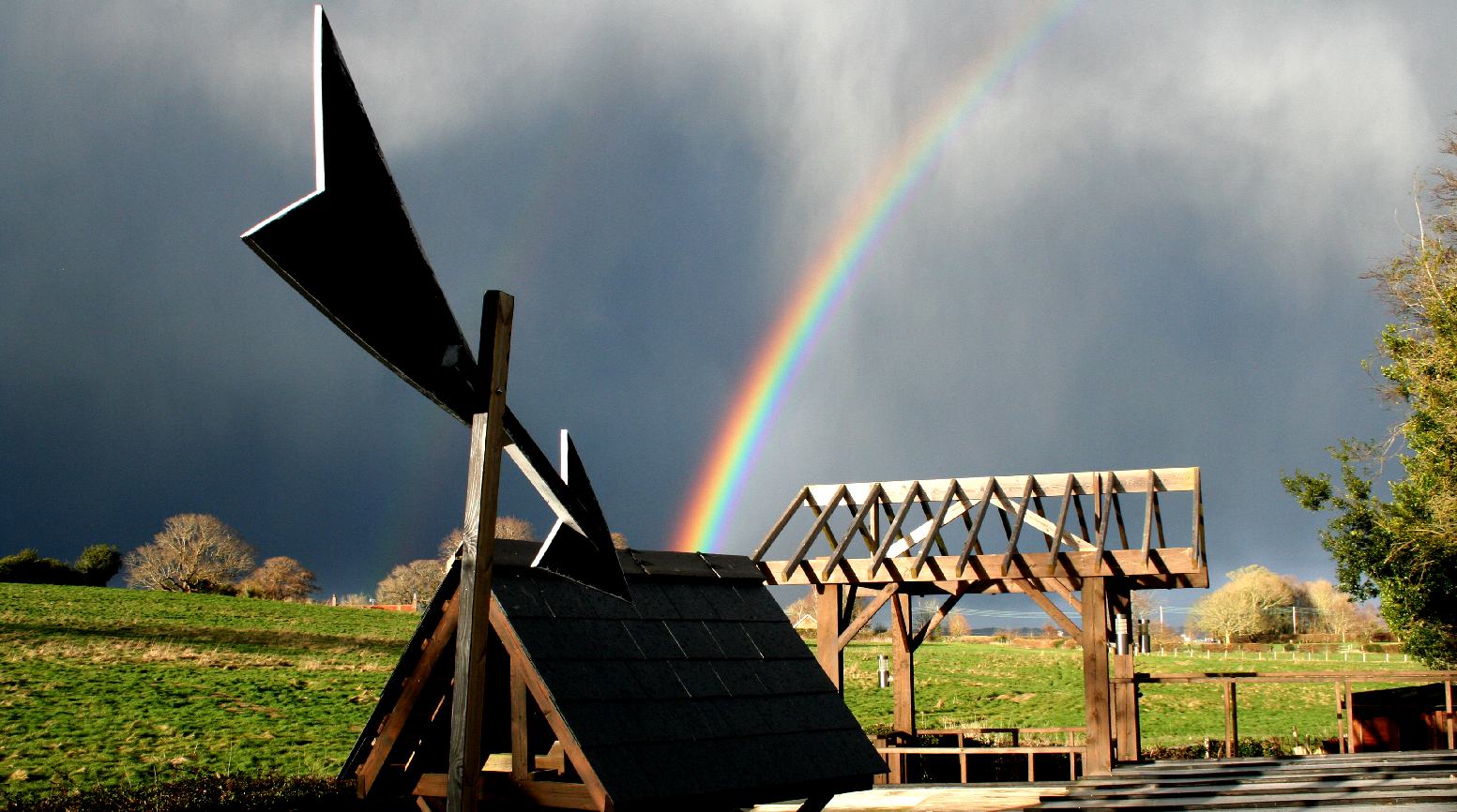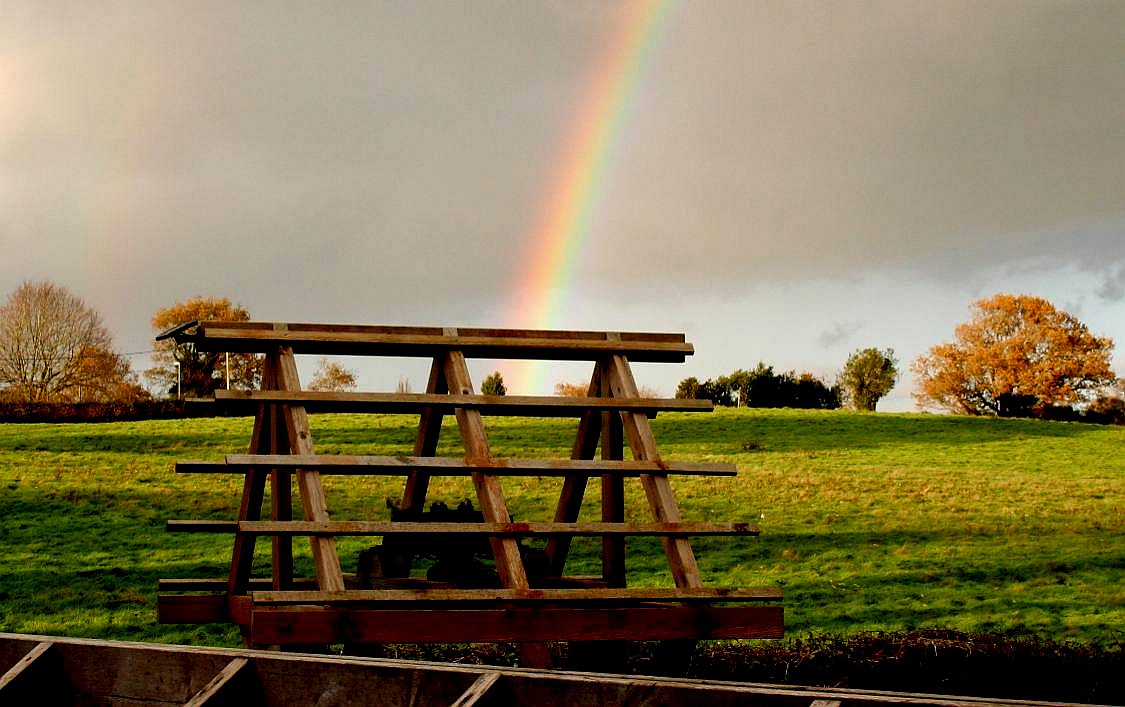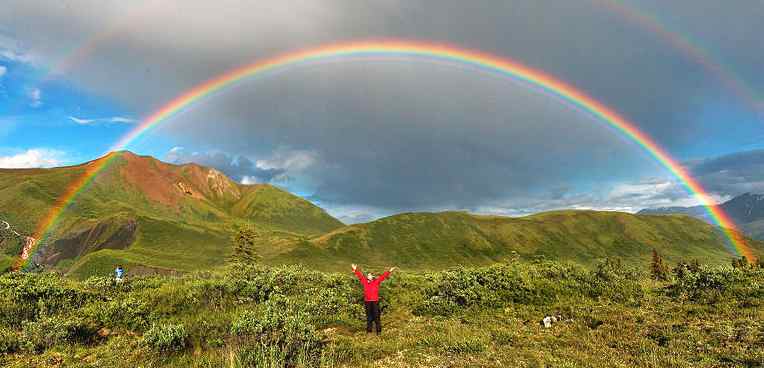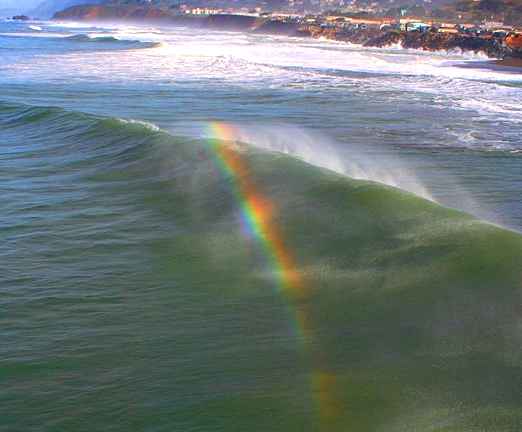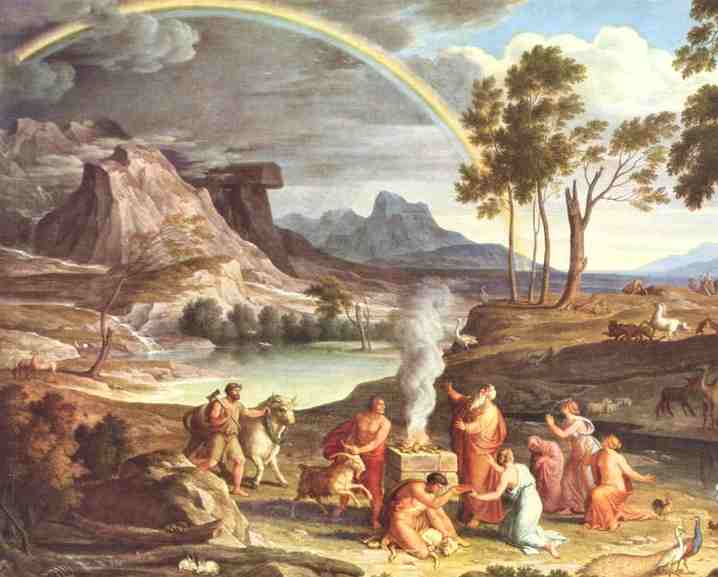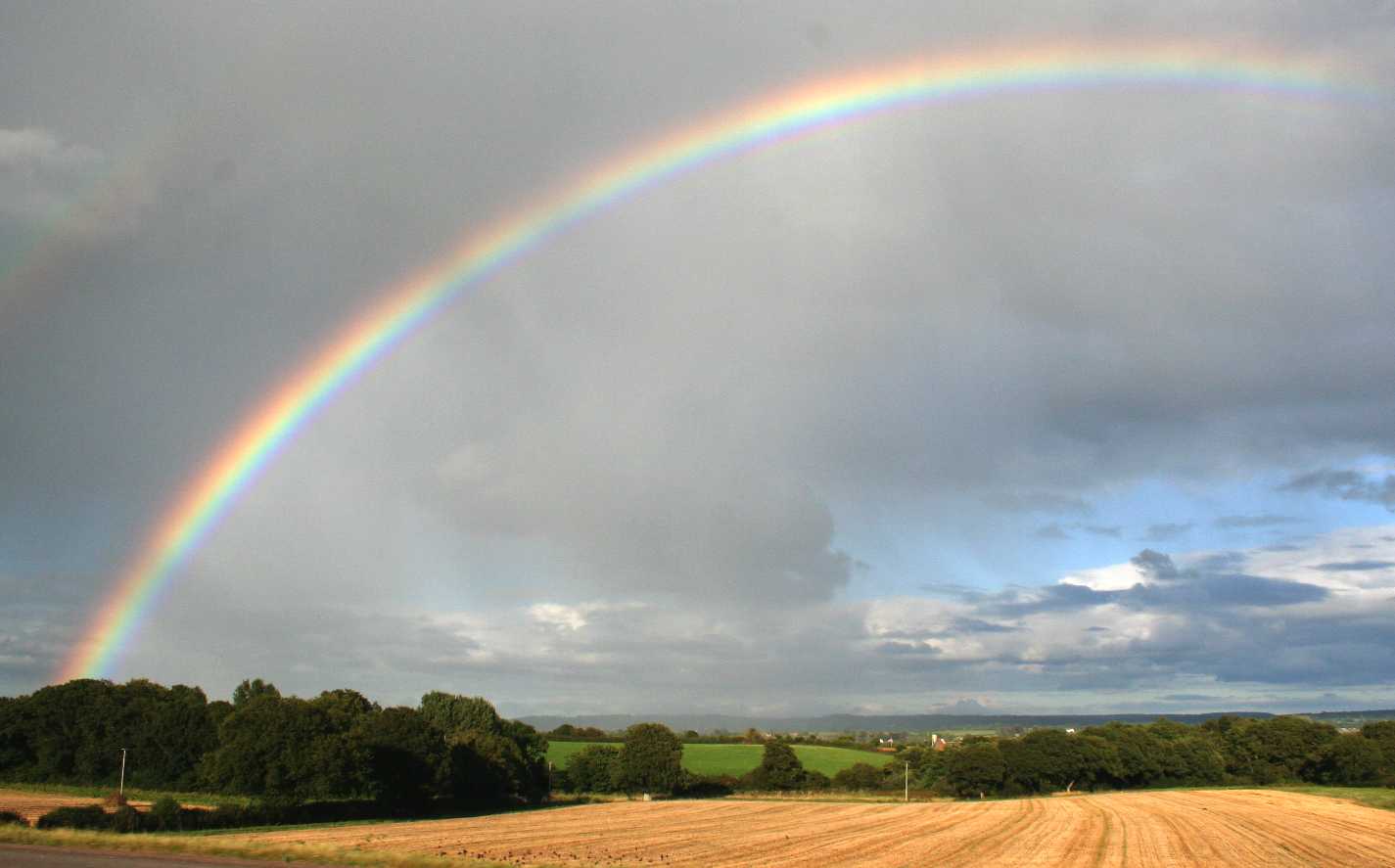|
RAINBOWS
|
|||
|
MARCH 18 2019 - A sign from above as to the worth of this local historic asset at Herstmonceux in East Sussex, or perhaps a warning to would be developers? However this rainbow may be interpreted, what is for sure is that four years ago this same phenomenon was captured on film to remind us that we should respect nature. This field is prone to flooding, perhaps a reference to the Biblical cleansing and survival of Noah, his family and the animals that sought refuge in the Ark.
25 NOVEMBER 2015 - Is there is a pot of gold at the end of this rainbow or is this a sign from above of good things to come? Herstmonceux Museum is a reminder of days gone by when water was drawn from wells to quench the thirst of villagers and workers on the vegetable garden at Lime House. We know that the villagers used this well at certain times of the year, as did other buildings in Lime Park and Chapel Row.
Rainbows are optical and meteorological phenomena that cause a spectrum of light to appear in the sky when the Sun shines onto droplets of moisture in the Earth's atmosphere. They take the form of a multicoloured arc, with red on the outer part of the arch and violet on the inner section of the arch. More rarely, a double rainbow is seen, which includes a second, fainter arc with colours in the opposite order, that is, with violet on the outside and red on the inside.
Even though a rainbow spans a continuous spectrum of colours, traditionally the full sequence of colours is most commonly cited and remembered as red, orange, yellow, green, blue, indigo and violet. ("Roy G. Biv" and "Richard Of York Gave Battle In Vain" are popular mnemonics.)
Though rainbows are bow-shaped in most cases, there are also phenomena of rainbow-coloured strips in the sky: in the shape of stripes, circles, or even flames.
Rainbow full double Alaska
Scientific explanation
Rainbows can be observed whenever there are water drops in the air and sunlight shining from behind a person at a low altitude or angle(on the ground). The most spectacular rainbow displays happens when half of the sky is still dark with draining clouds and the observer is at a spot with clear sky in the direction of the Sun. The result is a luminous rainbow that contrasts with the darkened background.
The rainbow effect is also commonly seen near waterfalls or fountains. Rainbow fringes can sometimes be seen at the edges of backlit clouds and as vertical bands in distant rain or virga. The effect can also be artificially created by dispersing water droplets into the air during a sunny day. Rarely, a moonbow, lunar rainbow or night-time rainbow, can be seen on strongly moonlit nights. As human visual perception for colour is poor in low light, moonbows are most often perceived to be white.
The rainbow's appearance is caused by dispersion of sunlight as it goes through raindrops. The light is first refracted as it enters the surface of the raindrop, reflected off the back of the drop, and again refracted as it leaves the drop. The overall effect is that the incoming light is reflected back over a wide range of angles, with the most intense light at an angle of 40°–42°. The angle is independent of the size of the drop, but does depend on its refractive index. Seawater has a higher refractive index than rain water, so the radius of a 'rain'bow in sea spray is smaller than a true rainbow. This is visible to the naked eye by a misalignment of these bows.
Rainbows may also form in the spray created by waves
The amount by which light is refracted depends upon its wavelength, and hence its colour. Blue light (shorter wavelength) is refracted at a greater angle than red light, but because the area of the back of the droplet has a focal point inside the droplet, the spectrum crosses itself, and therefore the red light appears higher in the sky, and forms the outer colour of the rainbow. Contrary to popular belief, the light at the back of the raindrop does not undergo total internal reflection and some light does emerge from the back. However, light coming out the back of the raindrop does not create a rainbow between the observer and the sun because spectra emitted from the back of the raindrop do not have a maximum of intensity, as the other visible rainbows do, and thus the colours blend together rather than forming a rainbow.
A rainbow does not actually exist at a particular location in the sky. It is, instead, an optical phenomenon whose apparent position depends on the observer's location and the position of the sun. All raindrops refract and reflect the sunlight in the same way, but only the light from some raindrops reaches the observer's eye. This light is what constitutes the rainbow for that observer. The position of a rainbow in the sky is always in the opposite direction of the Sun with respect to the observer, and the interior is always slightly brighter than the exterior. The bow is centred on the shadow of the observer's head, or more exactly at the antisolar point (which is below the horizon during the daytime), appearing at an angle of 40°–42° to the line between the observer's head and its shadow. As a result, if the Sun is higher than 42°, then the rainbow is below the horizon and cannot be seen as there are not usually sufficient raindrops between the horizon (that is: eye height) and the ground, to contribute. Exceptions occur when the observer is high above the ground, for example in an aeroplane (see below), on top of a mountain, or above a waterfall. A rainbow can be generated using a garden sprinkler but to get sufficient drops they must be very small.
It is difficult to photograph the complete arc of a rainbow, as this would require an angle of view of 84°. For a 35 mm camera, a lens with a focal length of 19 mm or less would be required, whilst most photographers are only likely to have a 28 mm wide-angle lens. From an aeroplane, one has the opportunity to see the whole circle of the rainbow, with the plane's shadow in the centre. This phenomenon can be confused with the glory, but a glory is usually much smaller, covering only 5°–20°.
Noah's Thanksoffering (c.1803) by Joseph Anton Koch. Noah builds an altar to the Lord after being delivered from the Flood; God sends the rainbow as a sign of his covenant (Genesis 8-9)
LINKS
Rainbow - taken while driving back from Bristol Photo © 2007 Solar Cola Ltd
Healthier alternative tastes for adventure capitalists
Solar Red | Solar Crush | Solar Cola | Solar Spice | Solar +
|
|||
|
This website is Copyright © 1999 & 2019. The bird logos and name Solar Navigator are trademarks. All rights reserved. All other trademarks are hereby acknowledged. Max Energy Limited is an educational charity.
|
